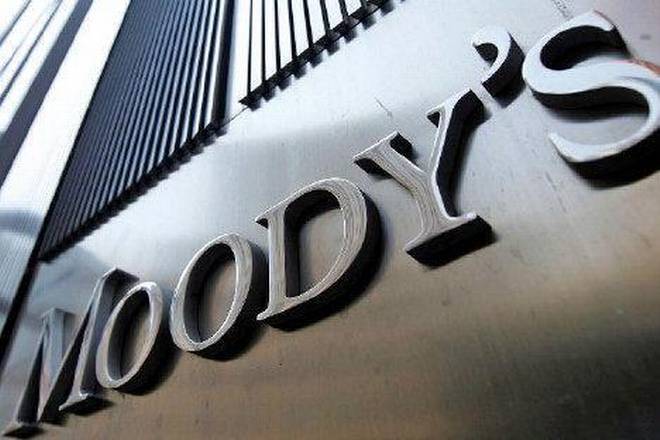
International credit rating agency Moody’s upgraded India’s sovereign bond rating for the first time in 14 years. The last upgrade had happened in 2004. However, the rating outlook was changed from ‘stable’ to ‘positive’ in 2015.
Highlights:
- Moody’s upgrades India’s credit rating to Baa2 stable from Baa3 positive.
- Credit rating is a measure of credit-worthiness of a borrower. It denotes the ability of the borrower to fulfil its payment obligations.
- As per Moody’s, India’s credit-worthiness has improved.
It is an endorsement of the structural reforms undertaken by the Modi Government.
The reason for the upgrade was that Moody’s expects that continued economic and institutional reforms by the Indian Government will boost economic growth and reduce the debt burden of the country. The reforms are expected to improve the business climate, enhance productivity, stimulate foreign and domestic investment, and ultimately foster strong and sustainable growth.
The reforms particularly mentioned by Moody’s in their press release were:
- Introduction of Goods and Services Tax. (Read: What is GST?)
- Improvement in the monetary policy framework (Read: Monetary Policy Committee Explained)
- The recapitalisation of public sector banks to tackle the twin balance sheet problem. (Read: Recapitalisation Explained & Twin Balance Sheet Problem Explained
- Demonetisation. (Read: What is Demonetisation?)
- Use of Aadhaar card to transfer subsidies directly into the bank account of the intended beneficiaries. (Read: All you need to know about Aadhar)
Moody’s acknowledged that the reforms like GST and Demonetisation have disrupted growth in the short run. But, in the longer term, India’s growth potential is significantly higher than most other countries with Baa rating.
The Moody’s India upgrade was long overdue. India’s chief economic advisor Arvind Subramanian had slammed rating agencies for not lifting India’s rating. He has written extensively about it in the Economic Survey.
This has been a month of positive news for India. Earlier this month, India jumped 30 ranks in the World Bank’s ‘Ease of Doing Business’ report for 2018.
(Read: India moves to 100th rank in Ease of Doing Business Report)
The upgrade will impact India in the following ways:
- India’s cost of borrowing will reduce in the international market. India will be able to borrow at a lower rate of interest.
- Indian companies will also benefit. The ratings of Indian companies will improve. It will boost demand for their offshore bonds and they will be able to borrow at a cheaper rate. The risk premium on Indian corporate bonds (dollar-denominated) already fell by around 5 basis points after the Moody’s India upgrade. The risk premium is the higher interest rate that has to be paid to compensate the lender for taking the risk to lend to companies with low credit-worthiness.
- Investment by foreign institutional investors (FII) into equity market will improve. FIIs have already exhausted their limit in the debt market. Therefore, the increased investment will be in the equity market.
- Foreign Direct Investment (FDI) will improve. Certain investors have a policy of not investing in countries rated below Baa.
- Moody’s India rating improves India’s relative standing with respect to other BRICS countries. India has a higher credit rating that Brazil, Russia and South Africa. While China’s rating is greater, it was downgraded by Moody’s this year.
Lastly, even though Moody’s upgraded India, it noted that India’s Government debt stood at 68% of GDP in 2016, significantly higher than the Baa median of 44%. The negative effect of the rating upgrade is that it will reduce the space to relax the fiscal deficit target.
For the uninitiated:
- Moody’s rating symbols in descending order are- Aaa, Aa, A, Baa, Ba, B, Caa, Ca, C.
- The ratings from Aa to Caa are further divided into 3 categories. It is denoted by numeric codes – 1, 2 and 3. 1 means highest ranking amongst the other countries with the same rating, 2 means mid-range ranking and 3 means lower end of ranking.
- Baa3 is the lowest investment grade, just a notch above the junk grade. India’s rating was Baa3 before the upgrade.
- Each rating, with its numeric code, is further subdivided into 3 categories: Positive, stable and weak. Positive means highest ranking amongst the other countries with the same rating and numeric code, stable means mid-range ranking and weak means lower end of ranking.
- Moody’s India ranking was upgraded to baa2 stable from baa3 positive
- Other international credit rating agencies like Standard & Poor (S&P) and Fitch are expected to follow suit in 6-7 months.
If you liked this post, don’t forget to comment and share 🙂
References:
What Moody’s rating means for India?
Moody’s upgrades India’s credit rating
India’s rating upgrade flashed green light for corporate bonds
Awesome blog.Simple and easy to understand.Keep posting.
Thank you Nikhil. Keep reading 🙂